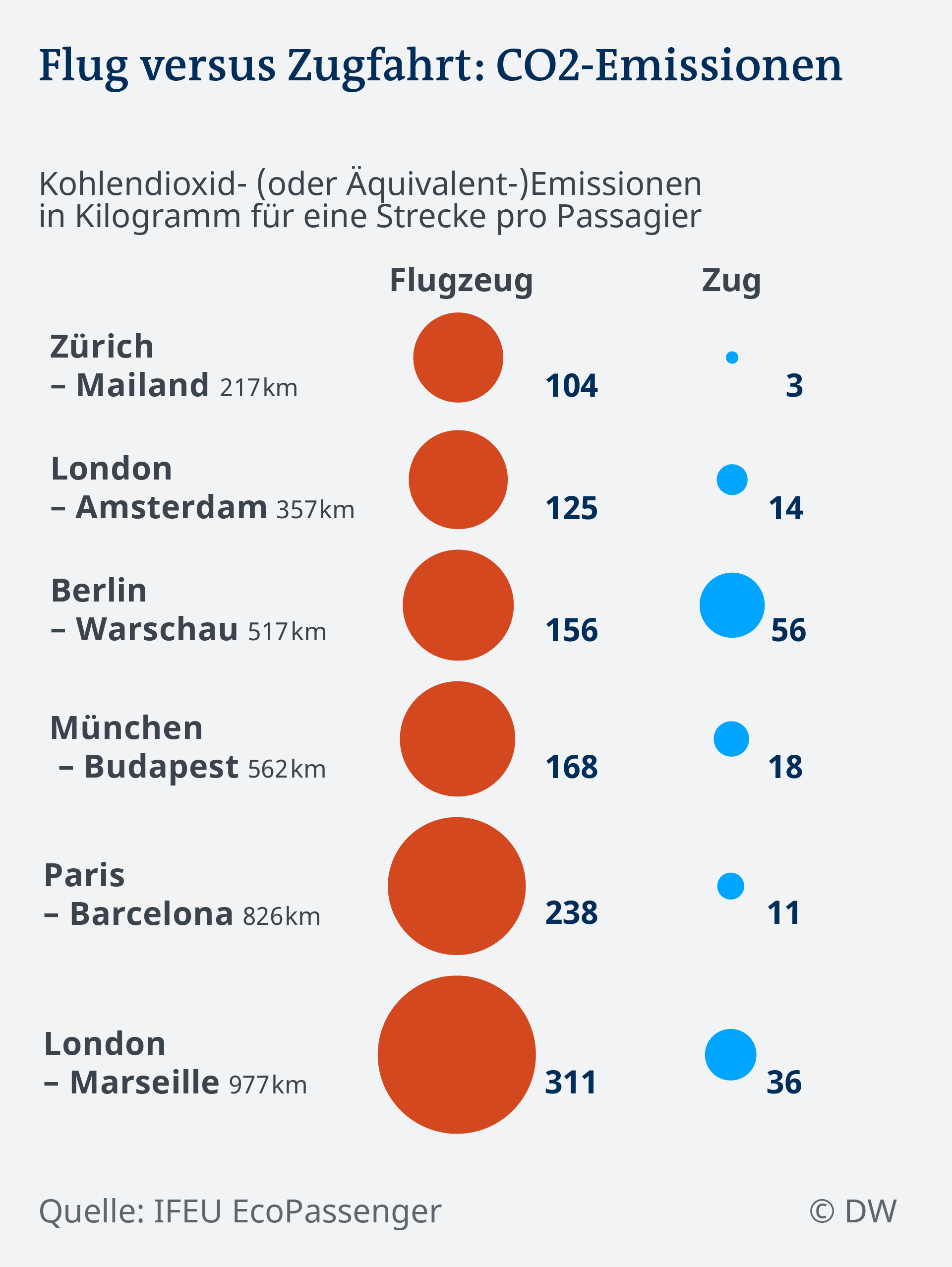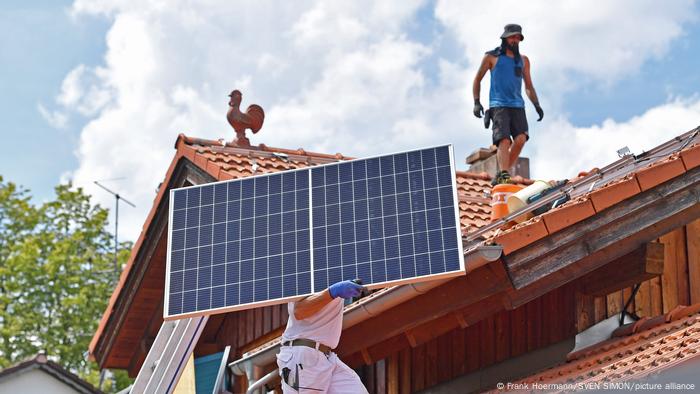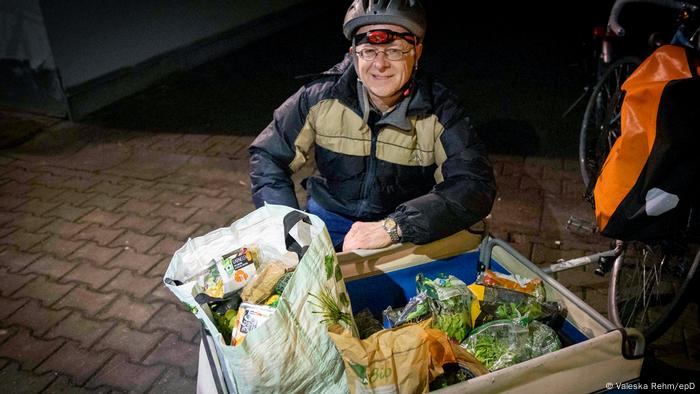There is not much time left to prevent a climate catastrophe. Personal footprint may be small compared to the carbon footprint of big oil companies, but each individual can make a contribution.

Through the streets of Brussels safely – on a car-free Sunday in Belgium
Humanity is running out of time to deal with the worst effects of climate change to prevent, warn leading UN scientists. Given this prospect, many are wondering if – and how – we can do something about it.
At the end of March, the Intergovernmental Panel on Climate Change (IPCC), better known as the Intergovernmental Panel on Climate Change, declared that global carbon dioxide emissions would be reduced by two thirds by 2035 and that the world urgently needed to end its dependence on fossil fuels.
The increasingly frequent and intense wildfires, hurricanes and floods associated with climate change can quickly lead to a sense of powerlessness. Despite the dire warnings, many people are left with the impression that fossil fuel companies cannot be stopped, that governments are unwilling to regulate them and that emissions reduction targets will never be met.
Yes, everyone There are many ways each of us can help reduce the greenhouse gas emissions responsible for global warming.
1. Switching from a plane or a fuel-powered car to a bus, train or bike
About a fifth of global emissions are caused by traffic. The biggest culprit is road traffic. We can make our contribution to climate protection by switching from petrol-powered cars to trains, bicycles or electric vehicles and, whenever possible, by using our legs – the ultimate zero-emission means of transport.
Electric options for transportation are becoming available in more and more cities. E-scooters and e-buses offer the possibility of getting from A to B with low emissions. A fuel-powered car emits more than 10 times more carbon dioxide than an e-scooter – even taking into account the emissions generated during manufacture and disposal.

The 10 percent or so of the world's population who have ever flown on a plane could make a big difference by switching from the plane to the train. A typical train journey from one European city to another emits up to 90 percent less CO2 than a comparable flight.
2. Eat more plants, fewer animals
The meat and dairy industry contributes around 15 percent to global greenhouse gas emissions – along with the loss of biodiversity, soil pollution and environmental pollution. According to the IPCC, switching to a diet high in plant-based proteins and low in meat and dairy products offers the greatest potential for reducing greenhouse gas emissions.
Protein: plant-based or animal-based?
So if you want to reduce your own impact on the climate, you could become a vegetarian – or vegan. Climate-friendly, plant-based meat substitutes are booming, making this decision even easier.
So far, plants provide only two percent of the protein consumed. According to the Boston Consulting Group, however, this proportion is expected to rise to 11 percent by 2035. It could be even faster if more people cut back on their meat and dairy consumption.
3. Putting pressure on governments
The students who took part in the Fridays for Future protests accused governments around the world of not doing enough to combat climate change. At least they managed to get the politicians to listen to them.
Sometimes the courts listen too. In April 2021, Fridays for Future activists successfully appealed to the German Federal Constitutional Court. They argued that the government's inadequate climate protection efforts threatened their fundamental freedoms and were unconstitutional. The court agreed and obliged the government to tighten its emissions reduction targets, which it did a few months later.
The climate is the top issue for a generation of growing voters, many of whom are pressuring politicians by taking part in protests, spreading campaigns on social media or writing to local legislators. The demand for climate neutrality by 2030 – the goal of a citizens' initiative in Berlin that campaigned for a climate referendum for the city – is a good starting point.
4. Switch to green energy providers and (where possible) install alternative energy sources
The burning of fossil fuels to generate energy accounts for the largest share of the production of greenhouse gases worldwide. Purchasing green electricity from clean, renewable sources such as wind and solar energy is therefore an excellent way to reduce a significant source of climate-damaging carbon dioxide as much as possible. And consumers have already made a difference.
From 2005 to 2019, the use of renewable energy in the European Union doubled and now accounts for 34 percent of all electricity generation. As a result, coal, the fossil fuel with the highest emissions, no longer meets most of Europe's electricity needs.

More and more homeowners are installing solar panels on their roofs
Those who live in their own home or rent an apartment can also try installing solar panels or heat pumps to heat their home with clean energy instead of gas. In some places, several households are even joining forces to supply their neighborhood almost entirely with renewable energy.
5. Turn off the lights and turn down the heat
Something as simple as turning down the heat can save a lot of energy. In view of the energy crisis triggered by Germany's dependence on Russian gas, the federal government decided to limit temperatures in public buildings to a maximum of 19 degrees in winter.
It is also very easy to counteract climate change by switching off computers overnight. So-called “vampire devices”, i.e. devices that consume electricity even when they are only in standby mode, should be completely take them off the network as long as you are not using them. It's even easier to turn off the light when you leave a room.
Another contribution to climate protection is the use of energy-efficient devices, for example an induction cooker instead of a gas stove. Better yet, ask your government to turn off the lights on monuments and buildings during the night, as Berlin recently did.
6. Waste less food
About a third of the food produced worldwide ends up in landfill. This loss and waste of food contributes massively to CO2 emissions when production, transport and processing of the food are taken into account. Food that ends up in landfills also produces methane, a potent greenhouse gas.

On “Containers” discarded food is “saved” from garbage containers
In the United States, food loss and waste causes 170 million tons of greenhouse gas emissions in the form of carbon dioxide equivalents each year. That corresponds to the annual emissions of 42 coal-fired power plants. This does not include emissions from landfills. So if we don't manage to eat everything that's in the fridge, we should at least compost the rest and fertilize the garden or use it as biogas.
We can also put pressure on supermarkets not to throw away surplus groceries but to donate them to food banks or other charities. Have uneaten food packed in the restaurant. Both measures are reflected in a law against food waste recently passed in Spain.
7. Plant trees
Trees are essential carbon sinks, yet deforestation is happening at an alarming rate. In the Amazon, for example, deforestation increased by 20 percent in 2021. More than ever, planting trees is the best thing we can do as individuals to reduce CO2 in the atmosphere.

Trees not only clean the air, increase biodiversity and ensure healthy soil, they also save energy. That's especially true in cities, where greenery on the streets keeps temperatures cooler and reduces the use of air conditioning, according to nonprofit organization Carbon Negative. And in winter, these trees can protect houses from cold winds, reducing heating costs by up to 25 percent.
Adapted from English by Phoenix Hanzo.